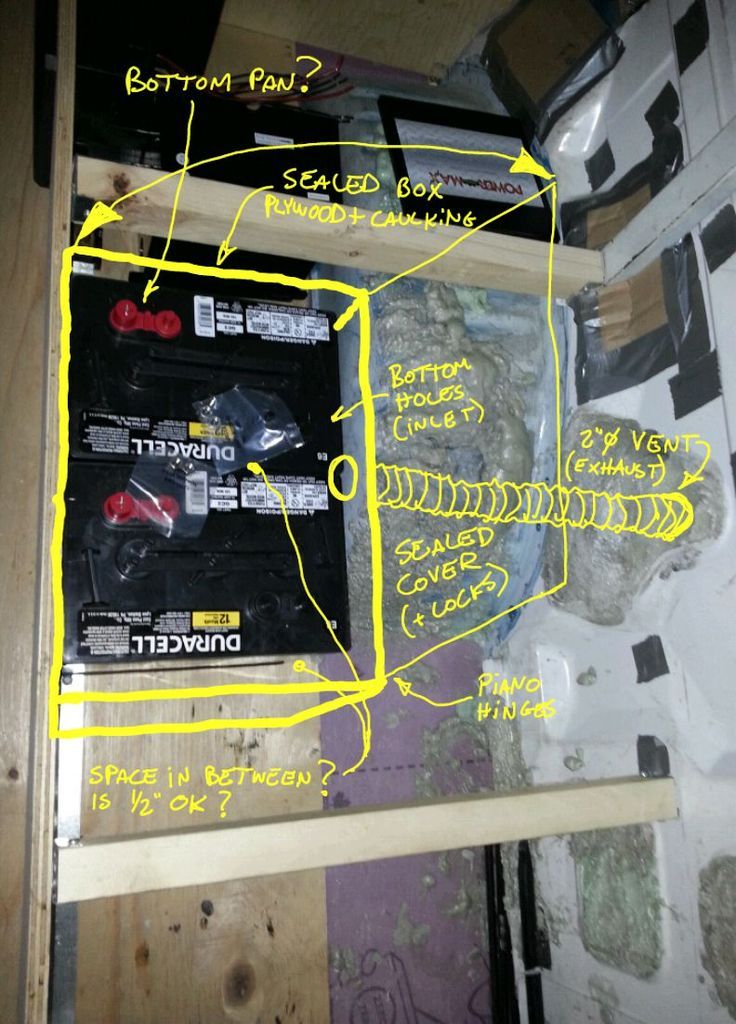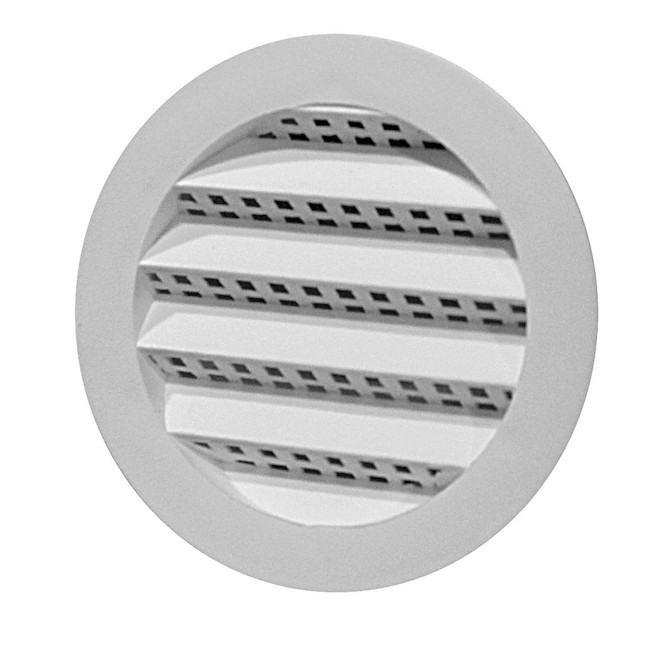- Good Sam Community
- Everything RV
- Technical Issues
- Building a battery box, info needed please.
- Subscribe to RSS Feed
- Mark Topic as New
- Mark Topic as Read
- Float this Topic for Current User
- Bookmark
- Subscribe
- Mute
- Printer Friendly Page
Building a battery box, info needed please.
- Mark as New
- Bookmark
- Subscribe
- Mute
- Subscribe to RSS Feed
- Permalink
- Report Inappropriate Content
Jun-17-2016 11:43 AM
I'm working on my very first DIY camper conversion, using a 2010 extended Ford E250.
Right now I'm planning my battery box for my two GC2 6V 215AH wet cells batteries.
I was planning :
-using plywood and caulking to seal it
-leaving 1/2" around the batteries and the box
-sealing the cover with a gasket and continuous piano hinges
-venting the box with a standard flexible pipe, 1-1/2" or 2" in diam. exhaust
-drilling many 1/2" holes on the floor between the batteries for air inlet (adding a screen mesh under the floor)
-adding a rubber mat underneath the batteries, do I need a pan?
-1/2" x 1/2" spacer all round the batteries on the floor to prevent them from moving around
If you have any issues or recommendations please don't hesitate, thanks!

DIY conversion build, extended 2010 Ford 5.4L E250 + high top, from Montreal Canada, new to all this so please be patient and clear with me (never built or camped in a van yet)
- Mark as New
- Bookmark
- Subscribe
- Mute
- Subscribe to RSS Feed
- Permalink
- Report Inappropriate Content
Feb-26-2017 09:15 PM

- Mark as New
- Bookmark
- Subscribe
- Mute
- Subscribe to RSS Feed
- Permalink
- Report Inappropriate Content
Feb-26-2017 08:45 PM
DrewE wrote:
#1 looks more rain resistant to me, though it may be a matter of the angle of the picture. I would likely choose it for that reason and drill a little weep hole at the very bottom of the vent so any water that gets in has a place to drip out.
That's a great idea, I will put a couple of holes on that bottom row.
DIY conversion build, extended 2010 Ford 5.4L E250 + high top, from Montreal Canada, new to all this so please be patient and clear with me (never built or camped in a van yet)
- Mark as New
- Bookmark
- Subscribe
- Mute
- Subscribe to RSS Feed
- Permalink
- Report Inappropriate Content
Feb-26-2017 08:35 PM
- Mark as New
- Bookmark
- Subscribe
- Mute
- Subscribe to RSS Feed
- Permalink
- Report Inappropriate Content
Feb-26-2017 05:07 PM
I will also make a 2" dia inlet vent on the bottom of the box.
What type of vent should I install on the sidewall of the camper?
I looked at what is being sold as a "battery box vent" and I have found 2 models that look a lot like them, which one would you suggest?
I was thinking of putting a small slope towards the outside vent so if water comes in while driving it will drip out when stopped.


DIY conversion build, extended 2010 Ford 5.4L E250 + high top, from Montreal Canada, new to all this so please be patient and clear with me (never built or camped in a van yet)
- Mark as New
- Bookmark
- Subscribe
- Mute
- Subscribe to RSS Feed
- Permalink
- Report Inappropriate Content
Jun-18-2016 07:10 AM
corvettekent wrote:
I read some place that you should have 6" above the batteries inside the box. I don't know that you need that much space but leave enough space incase your next batteries are taller.
Don't know about that, but I have read that the exterior vent should be min. 6" above the top of the batteries.
The MTS Products sealed and vented battery boxes below have a 1 1/2" dia. hose (approx.) and same size inlet on the bottom. These particular boxes are commonly used in FW trailers. Funny thing is, with the battery sitting on the floor of the box, it blocks the inlet. When I installed one of these boxes in a previous TT, I raised the battery on spacers. I came across a bunch of used like new MTS boxes at the back of an RV dealer's parts store for $5 each so I bought a couple for a future battery project.

- Mark as New
- Bookmark
- Subscribe
- Mute
- Subscribe to RSS Feed
- Permalink
- Report Inappropriate Content
Jun-17-2016 09:57 PM
2004 32' Carriage 5th wheel. 860 watts of solar MPPT, two SOK 206 ah LiFePO4 batteries. Samlex 2,000 watt Pure Sine Wave Inverter.
- Mark as New
- Bookmark
- Subscribe
- Mute
- Subscribe to RSS Feed
- Permalink
- Report Inappropriate Content
Jun-17-2016 06:31 PM
Personally, I'd want them held down as well.
2014 BoonHauler 3614
- Mark as New
- Bookmark
- Subscribe
- Mute
- Subscribe to RSS Feed
- Permalink
- Report Inappropriate Content
Jun-17-2016 06:04 PM

Even managed to keep the cowboy theme:

Edit: BTW, I did some researching on the volumes of gas that are created during charging. There is basically very little hydrogen produced and since it is much lighter than the atmosphere, moves quickly to the top of any containment. Your 2" vent will be more than adequate. You won't need too many or large holes to introduce the makeup air to the box. The hydrogen will vent and drag in available air through a very small hole. I used a 1/4" hole toward the bottom, opposite of the exhaust.
'71 Starcraft Wanderstar -- The Cowboy/Hilton
- Mark as New
- Bookmark
- Subscribe
- Mute
- Subscribe to RSS Feed
- Permalink
- Report Inappropriate Content
Jun-17-2016 03:27 PM
Go to Home Depot
Go to the paint department
Look for aerosol (spray) bed liner. RustOleum makes a good line.
Follow directions. Three coats. This means under the battery mat too.
- Mark as New
- Bookmark
- Subscribe
- Mute
- Subscribe to RSS Feed
- Permalink
- Report Inappropriate Content
Jun-17-2016 11:50 AM
- Way Elite solar charger/controller malfunction in Technical Issues
- Portable battery charger urgent in Technical Issues
- Ram truck ABS/HCU recall in Tow Vehicles
- Dometic 2-Way fridge repair issues in Technical Issues
- RV shore power plugged into inverter run by 12v battery and 100w solar panels in DIY Maintenance





